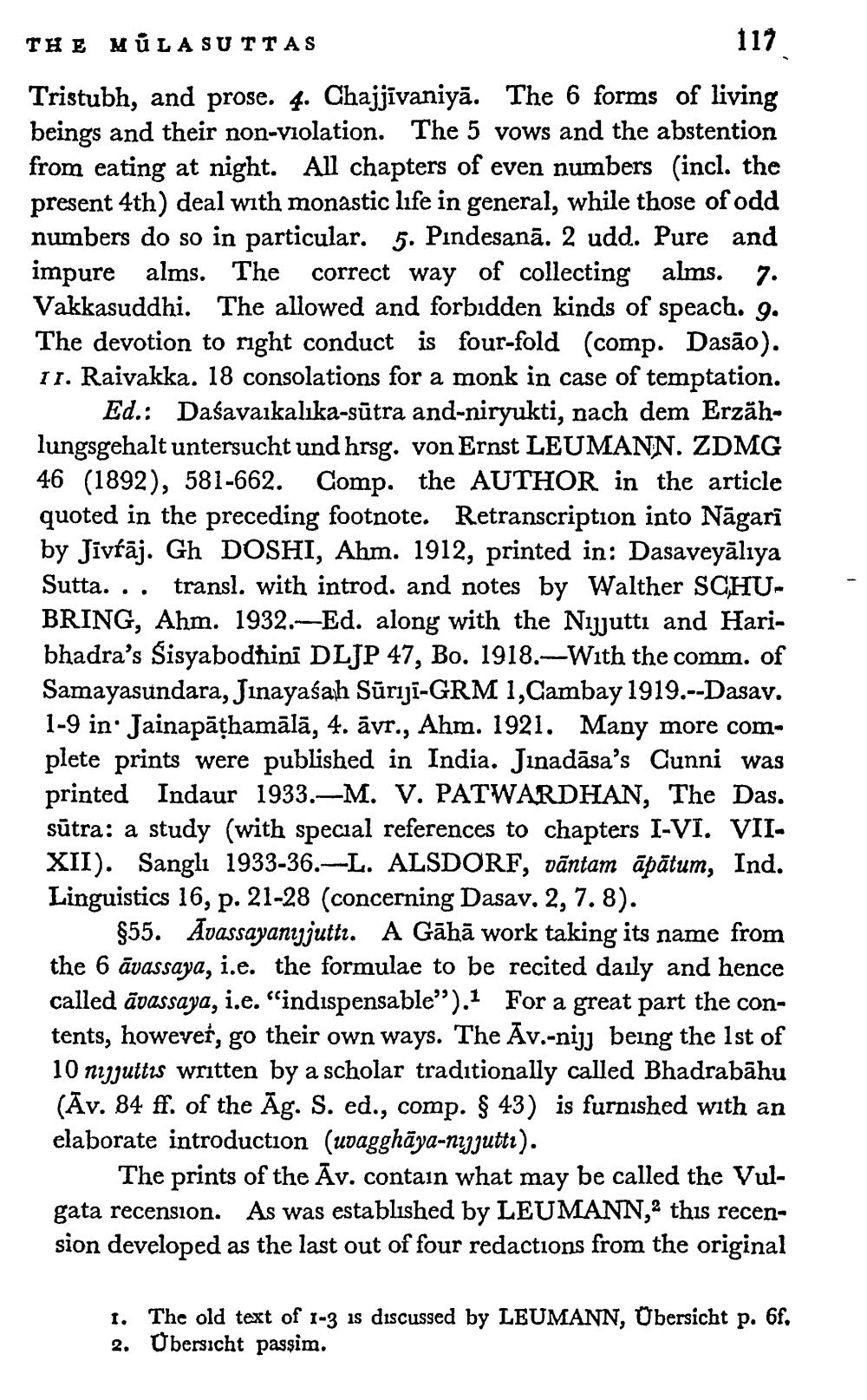________________
THE MÚL A SUTTAS
119
Tristubh, and prose. 4. Chajjīvaniyā. The 6 forms of living beings and their non-violation. The 5 vows and the abstention from eating at night. All chapters of even numbers (incl. the present 4th) deal with monastic life in general, while those of odd numbers do so in particular. 5. Pindesanā. 2 udd. Pure and impure alms. The correct way of collecting alms. 7. Vakkasuddhi. The allowed and forbidden kinds of speach. 9. The devotion to right conduct is four-fold (comp. Dasão). 11. Raivakka. 18 consolations for a monk in case of temptation.
Ed.: Daśava kalika-sūtra and-niryukti, nach dem Erzählungsgehalt untersucht und hrsg. von Ernst LEUMANN. ZDMG 46 (1892), 581-662. Comp. the AUTHOR in the article quoted in the preceding footnote. Retranscription into Nāgari by Jivtāj. Gh DOSHI, Ahm. 1912, printed in: Dasaveyālıya Sutta. . . transl. with introd. and notes by Walther SCHUBRING, Ahm. 1932.--Ed. along with the Nijutti and Haribhadra's Sisyabodhini DLJP 47, Bo. 1918.-With the comm. of Samayasundara, Jinayaśah Sūriji-GRM 1,Cambay 1919.--Dasav. 1-9 in. Jainapāthamālā, 4. āvr., Ahm. 1921. Many more complete prints were published in India. Jinadāsa's Cunni was printed Indaur 1933.-M. V. PATWARDHAN, The Das. sūtra: a study (with special references to chapters I-VI. VIIXII). Sanglı 1933-36.-L. ALSDORF, dāntam āpātum, Ind. Linguistics 16, p. 21-28 (concerning Dasav. 2, 7. 8).
$55. Avassayanyjuttr. A Gāhā work taking its name from the 6 āvassaya, i.e. the formulae to be recited daily and hence called āvassaya, i.e. "indispensable”).1 For a great part the contents, however, go their own ways. The Av.-niji being the 1st of 10 nijjuttis written by a scholar traditionally called Bhadrabāhu (Āv. 84 ff. of the Āg. S. ed., comp. § 43) is furnished with an elaborate introduction (udagghāya-nijjuttı).
The prints of the Āv. contain what may be called the Vulgata recension. As was established by LEUMANN, this recension developed as the last out of four redactions from the original
1. The old text of 1-3 is discussed by LEUMANN, Übersicht p. 6f. 2. Übersicht passim.




